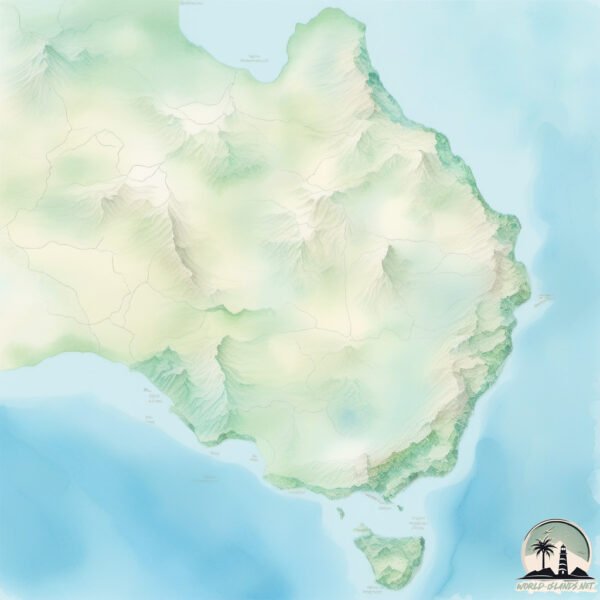Welcome to Maria , a Temperate island in the Bass Strait, part of the majestic Pacific Ocean. This guide offers a comprehensive overview of what makes Maria unique – from its geography and climate to its population, infrastructure, and beyond. Dive into the details:
Geography and size of Maria
Size: 101.7 km²Coastline: 104 kmOcean: Pacific OceanSea: Bass StraitContinent: Oceania
Maria is a Large Island spanning 102 km² with a coastline of 104 km.
Archipel: –
Tectonic Plate: Australia – A major tectonic plate covering Australia, New Zealand, and parts of the Indian and Pacific Oceans, known for its relative stability and occasional seismic activity.
The geographic heart of the island is pinpointed at these coordinates:
Climate and weather of Maria
Climate Zone: TemperateClimate Details: Temperate Oceanic ClimateTemperature: Warm Summer
Climate Characteristics: Known for its moderate year-round temperatures with ample rainfall and no dry season. Warm summers are characteristic.
Topography and nature of Maria
Timezone: UTC+10:00Timezone places: Australia/SydneyMax. Elevation: 609 m Mean Elevation: 115 mVegetation: Evergreen Broadleaf ForestTree Coverage: 71%
The mean elevation is 115 m. The highest elevation on the island reaches approximately 609 meters above sea level. The island is characterized by Plateau: Elevated flatlands rising sharply above the surrounding area, with a maximum elevation over 500 meters but a mean elevation less than 300 meters, forming unique highland areas on islands.
Dominating Vegetation: Evergreen Broadleaf Forest
Vegetation: 10 vegetation zones – Very Highly Diverse Island
Infrastructure and Travelling to Maria
Does the island have a public airport? no .
Does the island have a major port? no .
The mean population of Maria is 0 per km². Maria is Uninhabited. The island belongs to Australia .
Continuing your journey, Schouten is the next notable island, situated merely km away.
The Maria Island Walk: Our Story | Australian Wildlife Journeys
Maria Island National Park lies just a few kilometres off Tasmania's east coast, easily accessible from Hobart. It's spectacular ...
The Maria Island Walk: Our Story | Australian Wildlife Journeys
Maria Island National Park lies just a few kilometres off Tasmania's ...
Maria Island National Park lies just a few kilometres off Tasmania's east coast, easily accessible from Hobart. It's spectacular ...
THE BEST THINGS TO DO ON MARIA ISLAND, TASMANIA - Our Favourite Place!!
In this video we head to the east coast of Tasmania to discover all ...
In this video we head to the east coast of Tasmania to discover all the incredible things to do on Maria Island! This island is ...
Best of Maria Island + Bishop & Clerk track | Bucket list adventure 9/52
Best of Maria Island + exploring the Bishop and Clerk summit track ...
Best of Maria Island + exploring the Bishop and Clerk summit track walk over the islands north cliffs - Bucket list adventure 9/52 ...
Australia is classified as Developed region: nonG7: Developed economies outside of the Group of Seven, characterized by high income and advanced economic structures. The level of income is High income: OECD.
News – Latest Updates and Headlines from Maria
Stay informed with the most recent news and important headlines from Maria. Here’s a roundup of the latest developments.
Loading...
Please note: The data used here has been primarily extracted from satellite readings. Deviations from exact values may occur, particularly regarding the height of elevations and population density. Land area and coastline measurements refer to average values at mean high tide.

